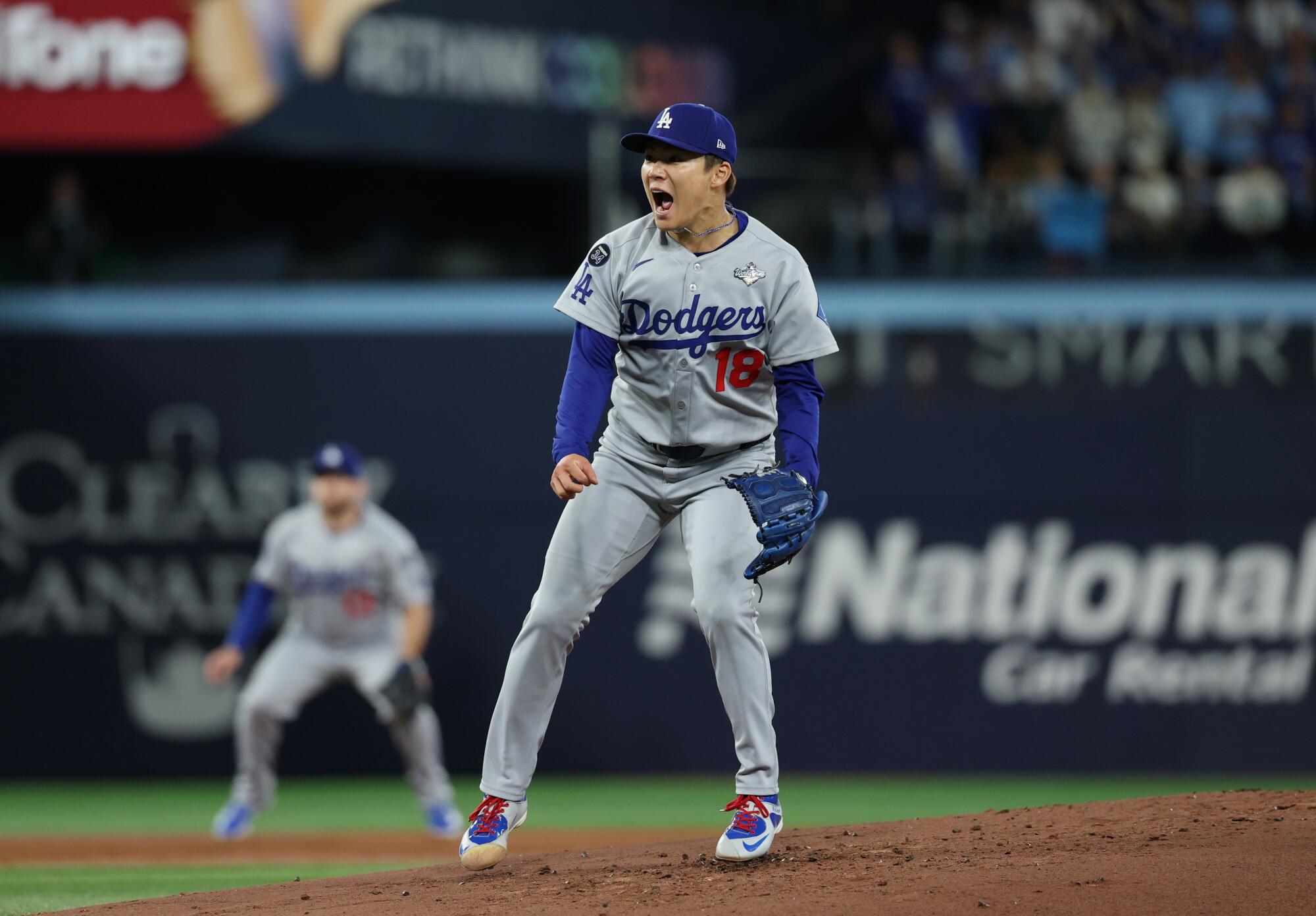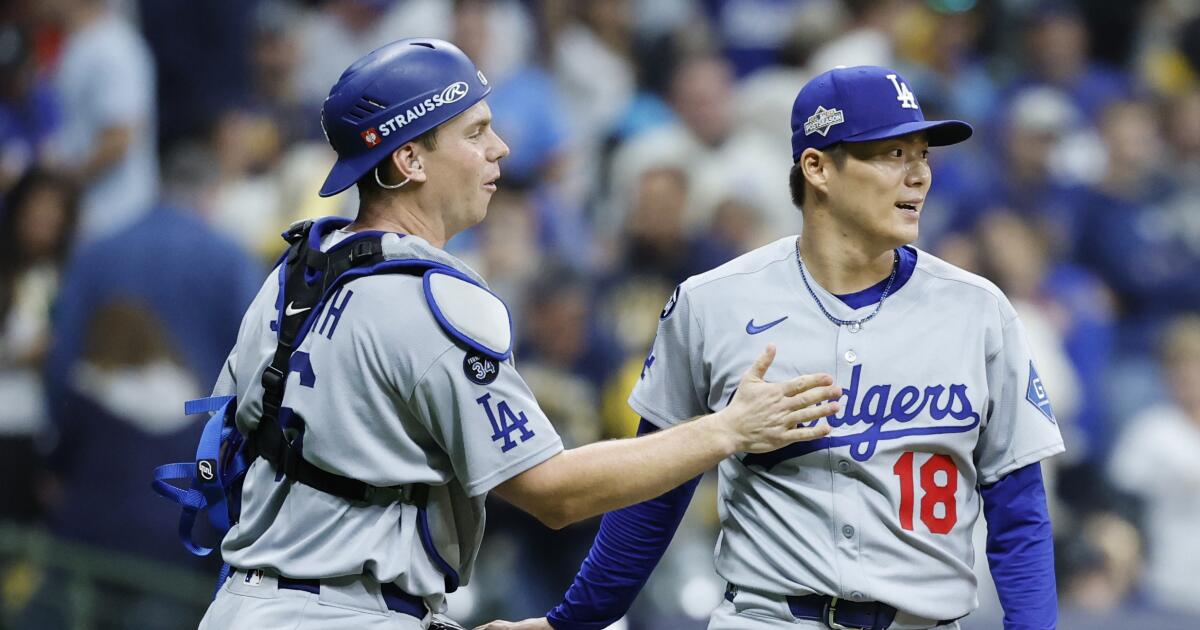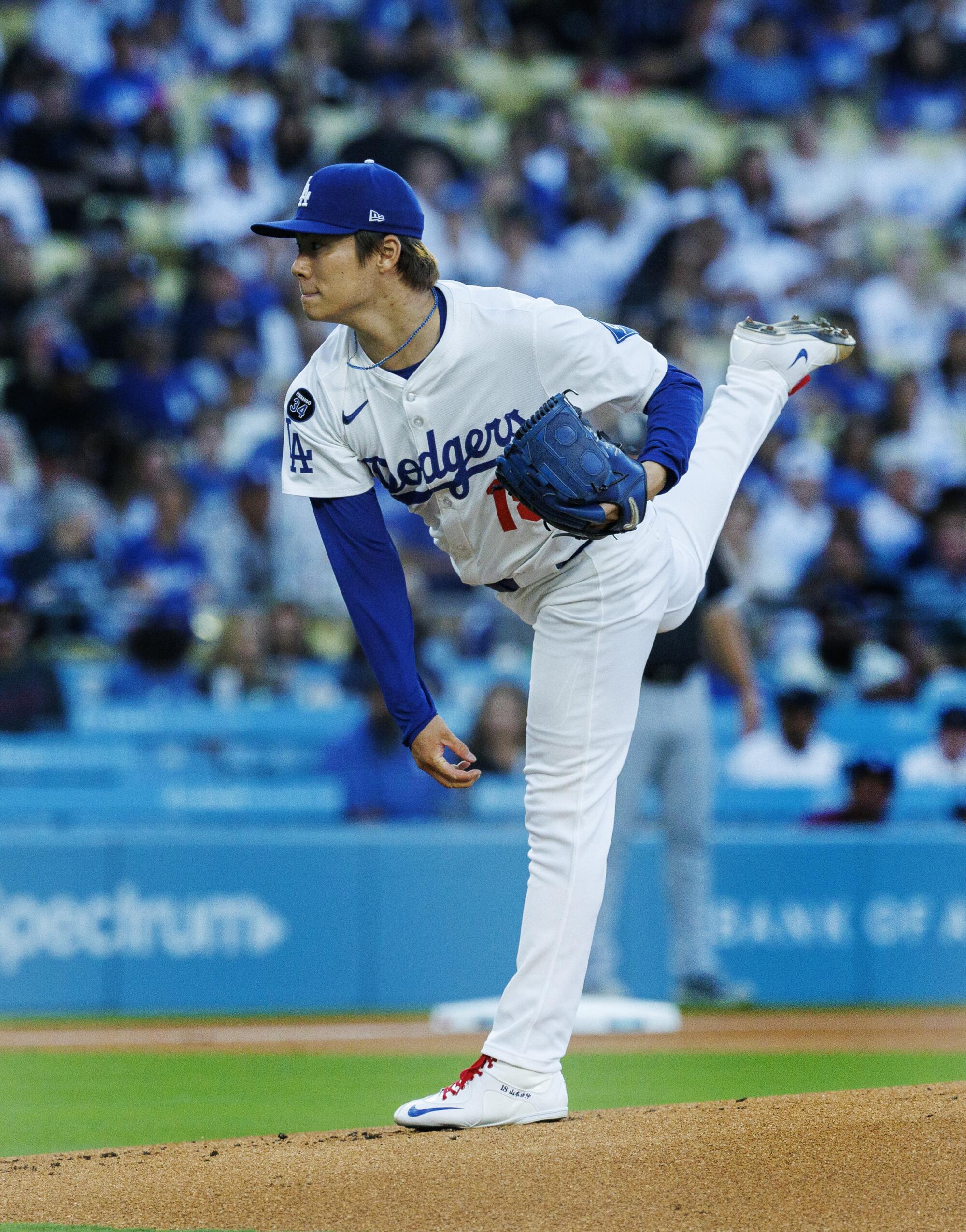What Yoshinobu Yamamoto’s complete games reveal about Dodgers’ star
TORONTO — Who would have guessed?
Who would have guessed that in a starting rotation of giants and alphas, the most important pitcher would be the diminutive 27 year old with the mischievous smile who plays the role of everyone’s little brother?
From a distance, Yoshinobu Yamamoto doesn’t look like someone who figures to contend in the coming years to be the best pitcher in the world.
He stands only 5-foot-10. He’s not mean in the way frontline starters sometimes are. He’s extremely considerate of others, even people who offer minimal, if any, transactional value — or more precisely, his focus and confidence in his work don’t blind him to their sensitivities.
Beneath the mask of normality, however, there is something in Yamamoto capable of fueling the kind of complete-game performance he delivered in the Dodgers’ 5-1 victory over the Toronto Blue Jays in Game 2 of the World Series.
Yamamoto wants to be great. Or perhaps he has to be.
Look, and you will see it. Listen, and you will hear it.
Yamamoto has often shared his admiration of Clayton Kershaw, but it’s clear he doesn’t see him as just a mentor. He sees him as a benchmark by which should measure himself.
When Kershaw announced his retirement last month, Yamamoto spoke of how grateful he was to play alongside him for two years. He talked about how much he learned from him. What was particularly interesting was what he said after.
“I think from my heart that I want to be an ace pitcher like Kershaw,” Yamamoto said in Japanese, “and I want to do my best to one day surpass my great senior.”
Kershaw has 223 career victories. He won a most valuable player award. He won three Cy Young Awards.
Not only does Yamamoto want to be better than Kershaw, he’s bold enough to state that ambition publicly.
Yamamoto did something Kershaw never did against the Milwaukee Brewers in Game 2 of the National League Championship Series by pitching a complete game in the postseason.
Eleven days later, he did it again, this time against the Blue Jays in the World Series.
The last pitcher to throw a complete game in a World Series was Johnny Cueto, and he did it 10 years ago. The last pitcher to throw consecutive complete games in the postseason was Curt Schilling, and he did it 24 years ago.
Yamamoto was the Dodgers’ most dependable starter in the regular season. As a second-year major leaguer, he made a team-high 30 starts, posting a 12-8 record with a 2.49 earned-run average.
Dodgers pitcher Yoshinobu Yamamoto reacts to recording a strikeout to close out the first inning of Game 2 of the World Series on Saturday.
(Robert Gauthier / Los Angeles Times)
His game has reached another level in the postseason, and in doing so, he might have saved the Dodgers, who were in trouble after Blake Snell’s implosion resulted in a loss in the opening game of this World Series
“I felt we had to win today no matter what,” Yamamoto said.
With his 105-pitch masterpiece, Yamamoto spared manager Dave Roberts the unpleasant duty of opening the gates to hell — pardon me, the bullpen — and tied the series at one game apiece. The next three games will be played at Dodger Stadium.
The historic performance by Yamamoto had an ominous start, as George Springer led off in the first inning with a double and advanced to third base on a single by Nathan Lukes.
Yamamoto escaped the jam by retiring Vladimir Guerrero Jr., Alejandro Kirk and Daulton Varsho in order, but his pitch count was already at 23.
“I didn’t think I could get to the end,” Yamamoto said.
The ever-optimistic Roberts was hopeful Yamamoto could complete six innings, which would task the bullpen with covering the last three. Roberts never had to prepare the smoke and mirrors required to navigate the final third of the game. Yamamoto gave up a run in the third inning but retired the last 20 batters he faced.
How he pitched reflected the reality of the Dodgers’ bullpen situation — essentially, that converted starter Roki Sasaki was the only reliever who could be trusted. Midway through the game, Yamamoto started throwing cutters, which induced contact and limited his pitch count.
“Fundamentally, my pitching style is to throw as much as I can in the strike zone,” Yamamoto said. “It’s a style in which I aim in the strike zone and throw with as much effort as I can.”
Before this postseason, the last time Yamamoto pitched a complete game was in 2023, for the Orix Buffaloes of the Japanese league.
So when Yamamoto recorded the final out of his start against the Brewers, he forgot his custom of embracing the catcher.
“It had been so long, I didn’t know where to go,” he said.
On Saturday, he knew, walking toward home plate and clasping hands with Will Smith. The guess here is that he won’t forget again. If he doesn’t pitch another complete game in these playoffs, he figures to pitch a few of them over the next handful of seasons.
He wants more.


